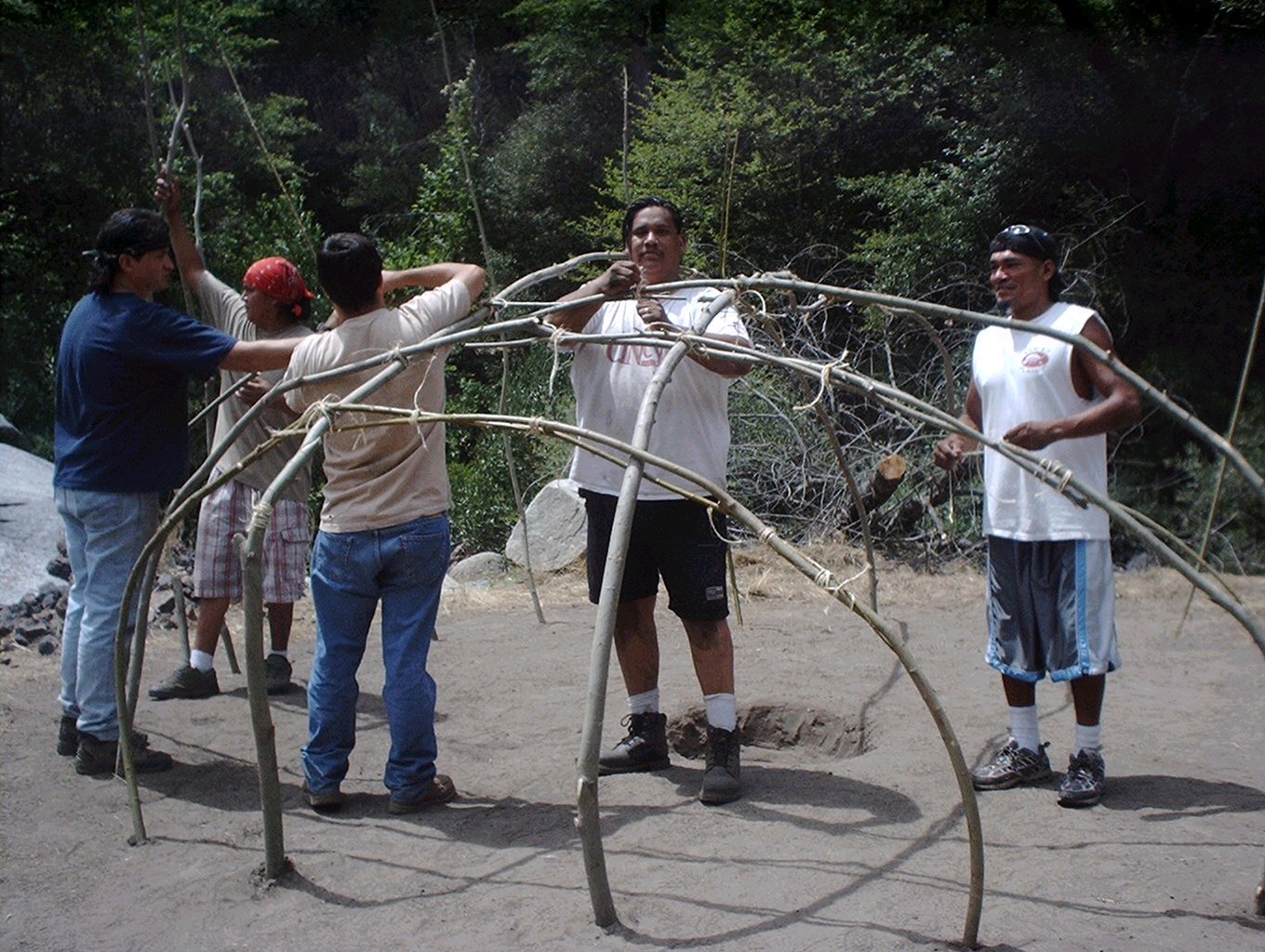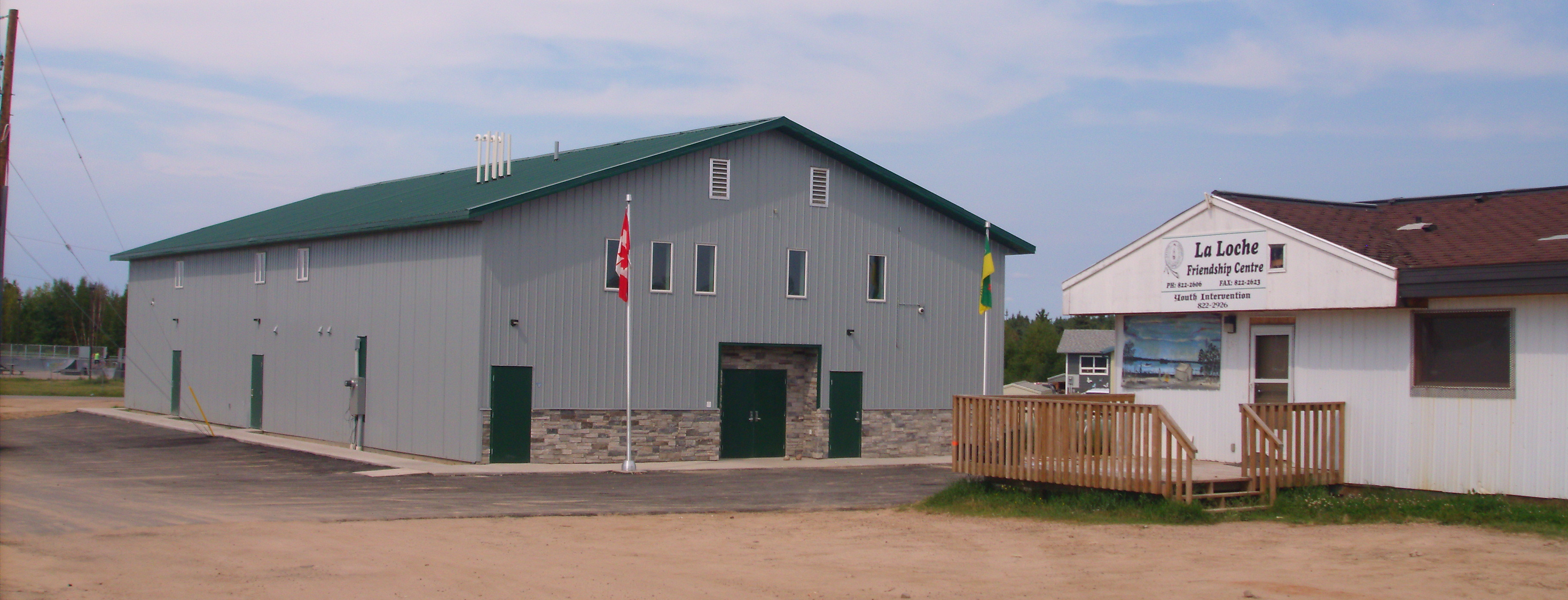What’s A Sweat Lodge?
Sweat lodges are heated dome-shaped structures used by Indigenous peoples during certain purification rites and as a way to promote healthy living. The intense heat generated — often by steam created from pouring water onto heated rocks — is meant to encourage a sweating out of toxins and negative energy that create disorder and imbalance in life. In this way, the sweat lodge ceremony cleanses the body, mind and soul.
Each sweat lodge is slightly different, depending on the community or person who operates it, and the purpose for which it is used. For example, some sweat lodge ceremonies are restricted to men, women, children or members of certain clans; at other times, the lodge is open to all. There are also sweats specific to fasting rituals, or in celebration of the Sun Dance and other cultural traditions.
Despite these differences, there are important commonalities among sweat lodge ceremonies. Most importantly, the sweat lodge is a sacred place, likened to the womb of Mother Earth. Sweats are therefore deeply spiritual and cultural experiences for many people. For this reason, sweat lodges are run by special operators — sometimes called keepers, and oftentimes an elder or healer — who are well versed in traditional healing and sweat lodge practices. The operator knows how to conduct sweats safely and effectively, and for various purposes. The great majority of conductors do not charge a fee to participate in the sweat lodge, although it is customary to offer them cloth or tobacco for their services. The purpose of the sweat lodge is not to generate revenue, but to heal and cleanse. Elders strongly caution against those who disguise themselves as healers, but are not trained in the sacred teachings. Non-traditional sweats can be dangerous. On 8 October 2009, for example, three sweat lodge participants died at a New Age “Spiritual Warrior” retreat near Sedona, Arizona. (See also Indigenous People: Religion and Spirituality).
How Is A Sweat Lodge Constructed?

Historically, there were two sweating techniques reflected in lodge construction. Indigenous peoples in Alaska, California and parts of Central America used a system of direct exposure to fire within the confines of a small, often semi-subterranean (partially underground) structure. The more common system, used by most Indigenous peoples in Canada, was to heat stones in a fire, place them inside a small, domed structure draped with buffalo or deer hides, and pour water on them to produce steam. Direct fire sweathouses doubled as men’s houses, but steam lodges were often used by a single person.
Today, sweat lodges heated by the steam of hot rocks are the most common. The majority of modern structures are made out of wood, covered with tarps and blankets. Tobacco is usually placed somewhere underneath the structure’s base. Altars and the sacred place where the heated rocks are kept before the ceremony are kept outside the structure. The direction of the lodge’s doorway often faces east, but this differs depending on the conductor; some teachings indicate that the doorway should face another direction or that its direction should change throughout the year.
How Is A Sweat Lodge Used?
Conductors will indicate how to best prepare for a sweat. Usually, participants will be told to abstain from alcohol and drugs beforehand. After making an offering to the conductor, participants also make offerings to the altar outside the lodge, and to the Grandmothers and Grandfathers — the heated rocks — before entering the sweat lodge. The fire keeper is in charge of heating the rocks and placing them inside the fire pit in the centre of the lodge. Other items are also placed inside the lodge, such as water (used to pour onto the rocks, thereby creating steam), tobacco (a sacred offering), medicines (certain herbs), and musical shakers and drums (used during prayers).
Once inside, participants sit in a circle around the fire pit for a length of time determined by the conductor and depending on the purpose of the sweat; often, this is a few hours. The fire keeper closes the door before the ceremony begins. Music is played and prayers are recited throughout the ceremony, inviting healing spirits into the lodge. In turn, participants are asked to talk about themselves and their reasons for using the lodge — this is their opportunity to speak to the Creator, to share their personal stories and to meditate on life. At the end of the ceremony, the conductor says prayers to thank the Creator and spirits. Elders might also smoke sacred pipes at this point. The fire keeper then opens the door to the lodge.
While enlightening and purifying, the experience of the sweat lodge has also been described as physically and mentally challenging. The heat and darkness inside the lodge can be intense for some participants. At times, the temperature, coupled with the overall spiritual experience, has been known to cause hallucinations. The sweat also forces participants to look inward, acknowledging personal struggles, which can be difficult, though rewarding. Participants have also described the sweat lodge as a way to connect with Mother Earth, using the natural elements of fire, earth, air and water to heal and cleanse.
Why Are Sweat Lodges Important?
For Indigenous peoples, the sweat lodge has spiritual, cultural and practical purposes. It is a place to connect with the Creator and to nature, and restore order and balance in life. The sweat lodge is also a place to connect with Indigenous heritage and culture. Until 1951, the Indian Act forbade the use of the sweat lodge in Canada. The lodge therefore serves as a symbol of cultural resilience and resurgence. Sweats also have healing functions, which, for some individuals, have been significant parts of their journey towards recovery and overall good health. Non-Indigenous peoples sometimes also participate and benefit from sweat lodge ceremonies. While elders caution against treating sweats like tourist attractions, many argue that they are open to all who understand and respect them.

 Share on Facebook
Share on Facebook Share on X
Share on X Share by Email
Share by Email Share on Google Classroom
Share on Google Classroom




